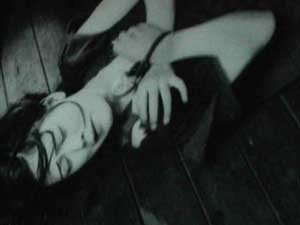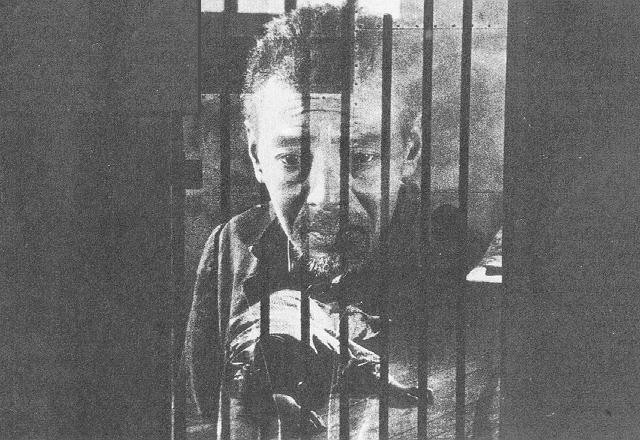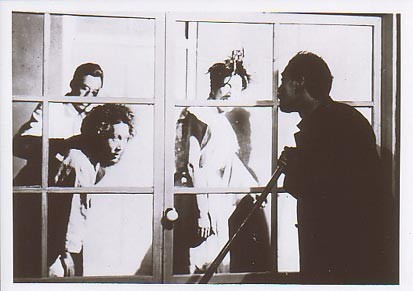A Page of Madness
In Kurutta Ippeiji (A Page of Madness), the main character is an elderly man who used to be a sailor and who neglects his wife and family. His unhappy wife becomes insane and he feels guilty about that. In order to be near her he takes up a job as a servant in the asylum where his wife resides – without revealing his real identity. He remembers how his wife at¬tempted to kill herself and that his daughter saved her. Her baby drowned however. The daughter now visits her mother in the hospital to tell her about her engagement, but the woman doesn’t react at all. Unexpectedly the daughter meets her father whom she considers responsible for the illness of her mother. But she forgives him. During the night the servant tries to escape with his wife to secure his daughter’s happiness.This movie of 1926 is regarded as one of the first experimental films in Japan, which has been rediscovered some years ago. It is a masterwork of film history; the modernity of this picture is astonishing.
The structure of the film is alienating with the dreams and imaginations, hallucinations, memories and reality passing into each other without clear boundaries. The quartet uses its saxophones almost like percussion instruments: cutting springs, beating mechanisms, quivering reeds and four bodies moving, using voices and hands. Thus they breathe and beat new life into Teinosuke Kinugasa’s exceptional film. The result is stirring and moving.
As this film is so strongly supporting itself, the score Eric Sleichim wrote for it is mostly respectful of the architecture as developed by Kinugasa. Inspired by Japanese Noh-theatre and Kabuki, essential silences are respected and the typical percussive sounds of Japanese drums and shakuhachi-flutes are integrated by a non-conventional way of playing the four saxophones.
This performance has been selected by the prominent Japanese magazine On Stage as one of the three best concerts in Japan in the year 1995.
Eric Sleichim: artistic direction, concept and composition
BL!NDMAN [sax]
Koen Maas: soprano saxophone
Eric Sleichim: alto saxophone
Piet Rebel: tenor saxophone
Raf Minten: baritone saxophone
Philippe Van Leer and Xavier Yerlès: special sound effects
Diederik De Cock: sound technician
Veerle Vaes: production management
a BL!NDMAN-production, commissioned by Ars Musica, in coproduction with the Royal Film Archive Brussels.
A PAGE OF MADNESS (1926)
length: 60 min (18 images/sec) 16mm
archive: royal film archive brussels
Shin Kankaru-ha Eiga Renmei: production
Teinosuke Kinugasa: production and screenplay
Kohei Sugiyama: photography
Seyo Ozaki and Kasaku Hayashi: set
Masao Inouethe: actor, the warden
Yoshie Nakagawa: actress: his wife
Agako Jijima: actress: his daughter
Hiroshi Nemoto: actor: a young man
Misao Seki: actor: the doctor
Eiko Minami: actor: the dancer



Agenda
A Page of Madness is a masterpiece of Japanese cinema. The film is a significant and rare surviving example of the pre-World War II Japanese avant-garde film, but is neither systematic nor perfect. It is instead highly experimental, and in view of the artistic environment that produced it, the anarchic avant-garde of 1920’s Japan, it could hardly be otherwise. Rather than a systematic critique, this experimental style is Kinugasa’s war of utter rebellion against film language – a war that he began with the help of the literary avant-garde”. From A War of Utter Rebellion: Kinugasa’s Page of Madness and the Japanese Avant-Garde of the 1920’s by James Peterson


